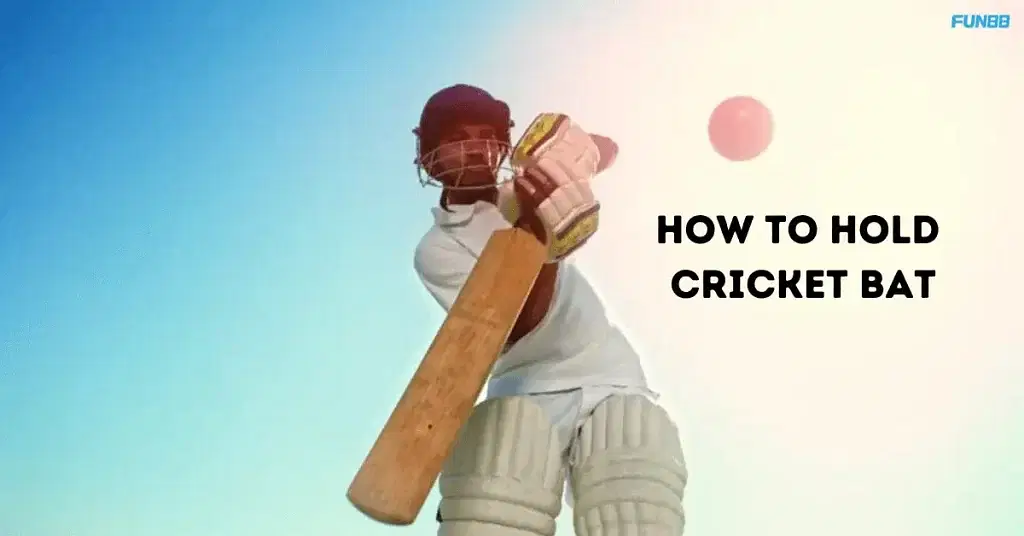Cricket, a beloved sport in India, brings together millions of fans and players, all eager to immerse themselves in the thrill of the game. Mastering the fundamentals is paramount for anyone looking to make their mark on the cricket field. One of the most critical aspects to get right is how to hold a cricket bat. An improper grip can lead to poor performance, missed shots, and even injuries. So, let’s delve deep into the basics of holding the bat to ensure you confidently step onto the pitch.
Understanding the Importance of Grip
Before we address the “how” of holding the bat, let’s recognise why the grip matters. The way you hold your bat affects your control, power, and, ultimately, your runs. A correct grip allows you to utilise your strength, react swiftly to deliveries, and execute precise shots. Similarly, an improper grip can hinder your ability to direct the ball and score effectively.
The Anatomy of a Cricket Bat
First things first, let’s familiarise ourselves with the cricket bat. A standard bat consists of a blade, which is the striking part, and a handle, where you grip it. Understanding the bat’s anatomy is vital to learning how to hold a cricket bat correctly. Here are the important sections:
- Blade: The flat part that hits the ball.
- Handle: The upper part where you grip the bat.
- Knob: The rounded end of the handle that prevents slipping.
- Splice: The area where the blade meets the handle.
Knowing these components can help you appreciate the functionality of your bat and how to use it effectively.
Step-by-Step Guide: How to Hold a Cricket Bat?
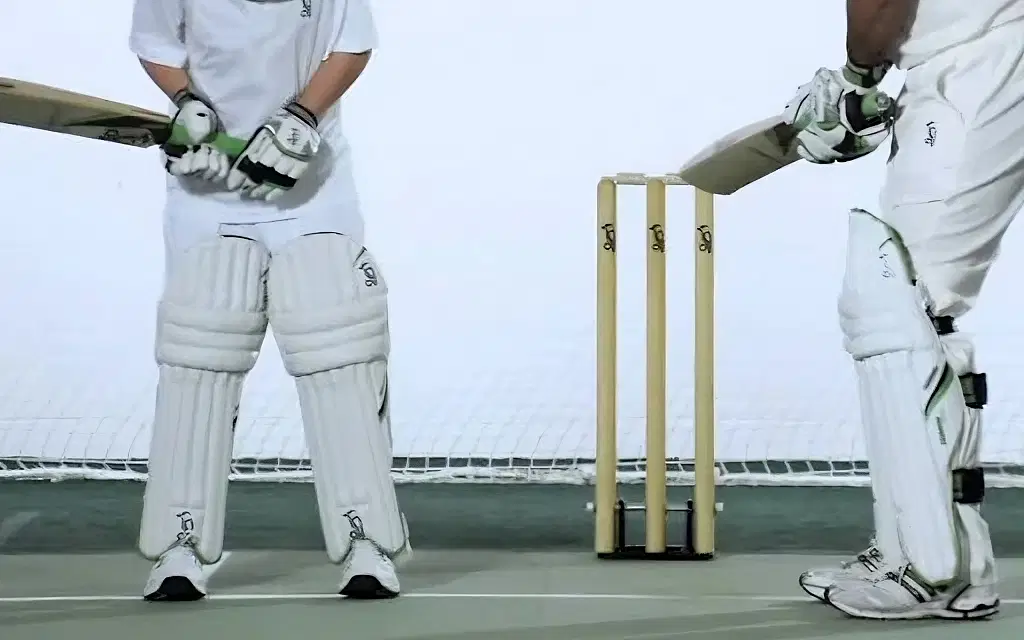
Now, let’s get into the specifics. Here’s a simple, detailed breakdown of how to hold a cricket bat in a way that sets you up for success.
Choose the Right Bat
Before you can hold a bat correctly, make sure you’re using the right one for your stature and playing style. A bat that is too heavy or too light can affect your grip and swing. Generally, the bat should reach your waist when you stand it upright.
Grip the Handle
The grip is arguably the most critical aspect of how to hold a cricket bat. Here’s how to do it properly:
- Use your dominant hand to grip the handle. For right-handed batters, this is the right hand, and for left-handed batters, it’s the left.
- Position your hand at the top of the grip where it feels comfortable. You may want to place a finger over the knob for added security.
Place Your Non-Dominant Hand
Your non-dominant hand plays a crucial role in stabilising your grip:
- Locate your non-dominant hand. For right-handed batters, this will be the left hand, and for left-handed batters, the right.
- Position your non-dominant hand below the dominant hand on the handle. Let the palm face towards the ground, and keep your fingers tightly around the handle but not too tight. A relaxed grip is better for fluid motion.
The Perfect Grip Position
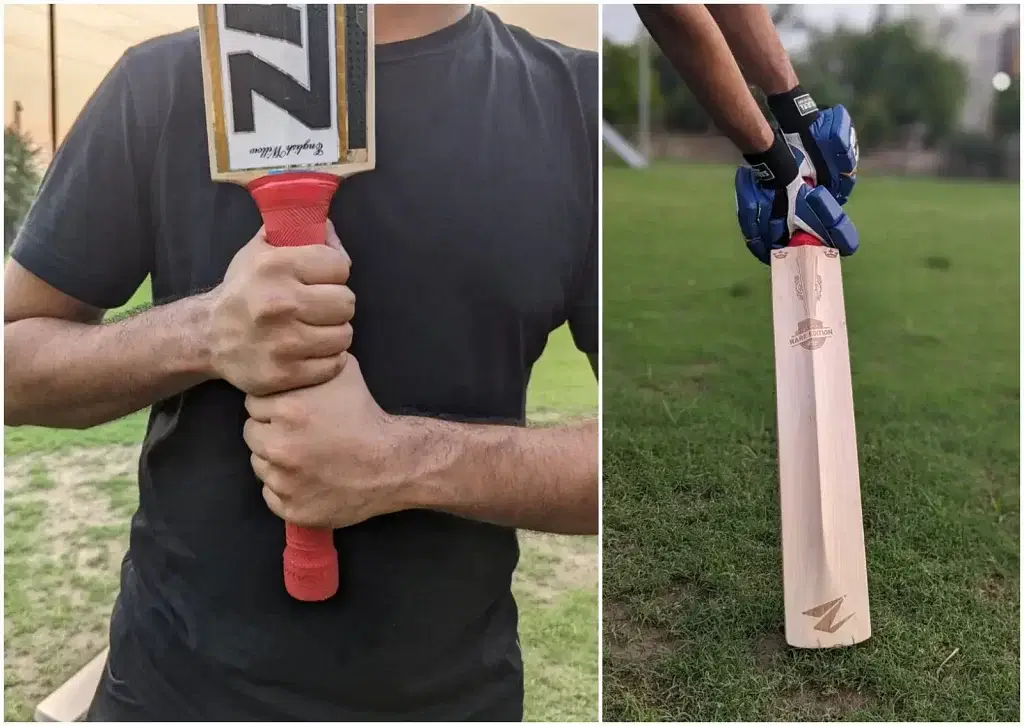
An effective grip is not merely about placing hands on the bat; it’s about how the bat rests in those hands. Here’s a simpler breakdown:
- Closed Grip: Both hands should form a ‘V’ shape, pointing towards your shoulder. This grip will help with stability and control.
- Knuckles Alignment: Ensure that your knuckles are aligned; this should feel natural. Misaligned knuckles can lead to instability.
Keep the Bat at an Angle
While holding your bat, make sure it’s not completely upright or horizontal. The ideal angle is about 45 degrees. This stance prepares you to hit the ball effectively without compromising your balance.
Play the Ball Late
One common mistake is trying to hit the ball too early. Instead, let the ball come to you. This involves adjusting your grip slightly as the ball approaches, ensuring a stronger connection.
Practice Your Swing
Once you are confident in your grip, practice swinging the bat. Focus on moving your arms through the natural swing arc, maintaining the grip throughout. This coordination is crucial for executing shots effectively.
Related Read: What is a Free Hit in Cricket? Various Formats Rules
Common Mistakes to Avoid
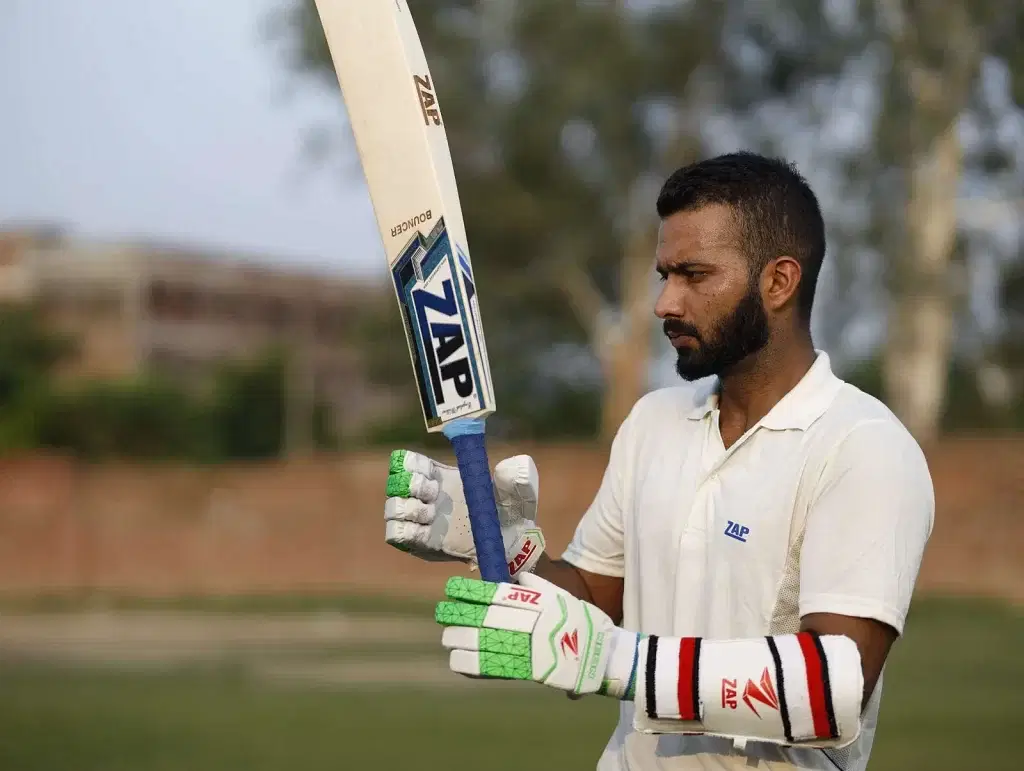
While learning how to hold a cricket bat, many common pitfalls can interfere with a batter’s performance. Here are some mistakes and how to avoid them:
Over-Gripping the Bat
Holding the bat too tightly can limit your mobility. Keep your grip firm but comfortable. Relax your hands to allow for fluid movement.
Incorrect Hand Placement
Ensure your hands are placed correctly on the handle. Misplacement can cause the bat to slip during swings and reduce control.
Not Using the Knob Effectively
The knob of the handle is designed to provide grip. Make sure not to neglect it while positioning your hands. The knob helps prevent the bat from slipping out during play.
Different Types of Grips
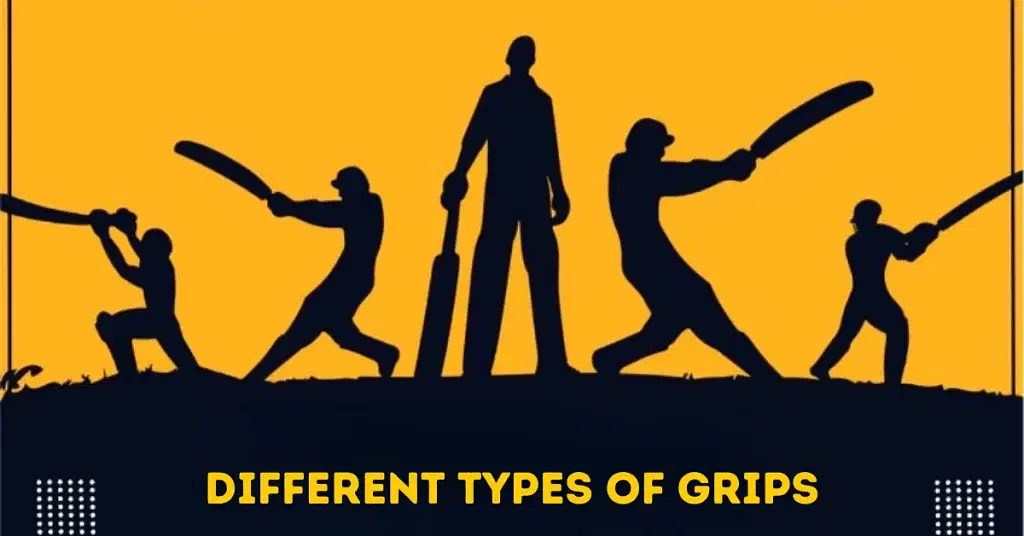
In cricket, various grips can be employed for different shots. It’s important to adapt your hold based on the situation. Here are a few grips you might want to incorporate:
The Full Grip
This is the most common grip used by batters. Hold the bat firmly and use most of your fingers to wrap around the handle. This grip provides maximum control and stability.
The Padded Grip
Some players prefer to use a padded grip where the top hand is positioned more securely under the handle. This allows for powerful drives but requires practice to master.
The Split Grip
In this grip, the hands are separated more deliberately on the handle. This offers enhanced wrist movement for spinning shots but may sacrifice stability.
Drills to Improve Your Grip and Handling
To reinforce your grip and handling technique, consider implementing a few practical exercises:
Batting Against a Wall
Find a strong wall and practice hitting a softball against it. Focus on your grip and swing while being mindful of your stance. This drill allows you to emphasise your grip without worrying about running.
Shadow Batting
Stand in front of a mirror and mimic batting motions without a ball. Pay attention to your grip, position, and angles. This helps build muscle memory and confidence.
Partner Drills
Pair up with a friend and toss a ball gently towards each other while focusing on grip stability. Take turns adjusting grip positions and hitting. This encourages feedback and improvement.
Also Read: How to Bet on Cricket? A Beginners Betting Guide
Conclusion: Elevate Your Game with the Right Grip
Whether you’re stepping onto the local pitch or dreaming of playing at a national level, ensuring you know how to hold a cricket bat correctly will undoubtedly contribute to your success. So gather your friends, grab your bats, and let the game begin!
By following this guide, batters can sharpen their abilities and enjoy the game even more. If you focus on your grip, you’ll find joy in the sublime art of batting. Keep practising, and always strive for improvement. Good luck out there on the field!
Frequently Asked Questions (FAQs)
The fundamental aspects include positioning your dominant and non-dominant hands, ensuring both are comfortably wrapped around the handle. Aim for a closed grip that forms a ‘V’ pointing towards your shoulder while aligning your knuckles. This grip promotes better control and stability.
Absolutely. The grip may require adjustment for different types of shots. For instance, a tighter grip can be beneficial for pull shots to generate power, while a relaxed grip is often recommended for finesse strokes like cuts or drives. Flexibility in your grip is essential for shot selection.
Accordion content.The right bat size is essential for effective grip and control. Hold the bat vertically with the handle resting on the ground to find the appropriate size. The top of the handle should reach your waist. A bat that’s too long or short can adversely affect your grip and batting technique.
Yes, they can also provide a sense of comfort, allowing you to maintain a freer movement while holding the bat.
Consistency is key. Regular practice, ideally daily, can embed the correct grip technique into your muscle memory. Aim for multiple sessions per week, focusing specifically on grip while you practice batting drills. Short, frequent sessions are often more effective than longer, infrequent practices.
Yes. Practising shadow batting can also improve your grip control while developing muscle memory.
Star it if you find it helpful.
